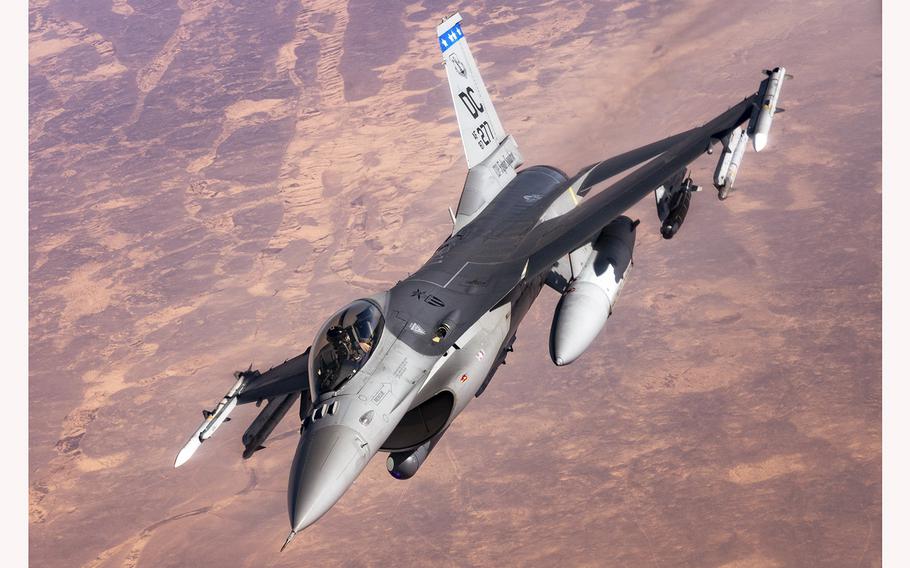
An Air Force F-16 Fighting Falcon aircraft assigned to the 121st Expeditionary Fighter Squadron flies over U.S. Central Command’s area of responsibility on July 17, 2021, during a mission in support of Combined Joint Task Force-Operation Inherent Resolve. (Taylor Crul/U.S. Air Force)
F-16 fighter jets intercepted Russian bomber and fighter aircraft in international airspace off Alaska’s coast Monday in an incident defense officials said was unrelated to a series of objects shot down over North America in recent days.
North American Aerospace Defense Command scrambled two F-16s to intercept the four Russian aircraft — two TU-95 BEAR-H bombers and two SU-35 fighters — after they entered the Alaska Air Defense Identification Zone, or ADIZ, according to a NORAD statement issued Tuesday. Officials described the intercept as routine and professional.
“This Russian activity in the North American ADIZ occurs regularly and is not seen as a threat, nor is the activity seen as provocative,” according to the statement from NORAD, the joint U.S.-Canadian military organization charged with protecting airspace over the two nations. “NORAD had anticipated this Russian activity and, as a result of our planning, was prepared to intercept it.”
The intercept was the first reported of Russian aircraft near Alaska in 2023, but such incidents have occurred as often as 15 times per year in the recent past, according to NORAD.
The Russian aircraft never came close to entering U.S. airspace, which extends 12 nautical miles from American shores. However, U.S. officials expect aircraft entering the Alaskan Air Defense Identification Zone — a stretch of mostly international airspace some 200 nautical miles off the Alaskan coast — to identify themselves in the interest of national security.
The two F-16s scrambled Monday were supported by other American aircraft, including two F-35A advanced stealth fighters, one E-3 Sentry airborne warning and control system aircraft and two KC-135 Stratotankers, NORAD said.
NORAD officials said the Russian flights were “in no way related to recent” incidents in which F-22 and F-16 fighters have shot down unidentified objects over U.S. and Canadian airspace. The Air Force shot down aerial objects on Friday off Alaska’s coast, over Canada’s Yukon territory on Saturday, and over Lake Huron near Michigan’s coast on Sunday.
White House and Pentagon officials have released few details about those incidents. However, they have said the objects had not posed a physical threat to American or Canadians, but they were shot down because they could impact commercial air travel.
The sudden uptick in such aerial incidents is likely the result of retooled radar efforts over North America that NORAD has instituted since a Chinese spy balloon crossed over the mainland United States two weeks ago before it was shot down off South Carolina’s coast, according to Air Force Gen. Glen VanHerck, the commander of NORAD.